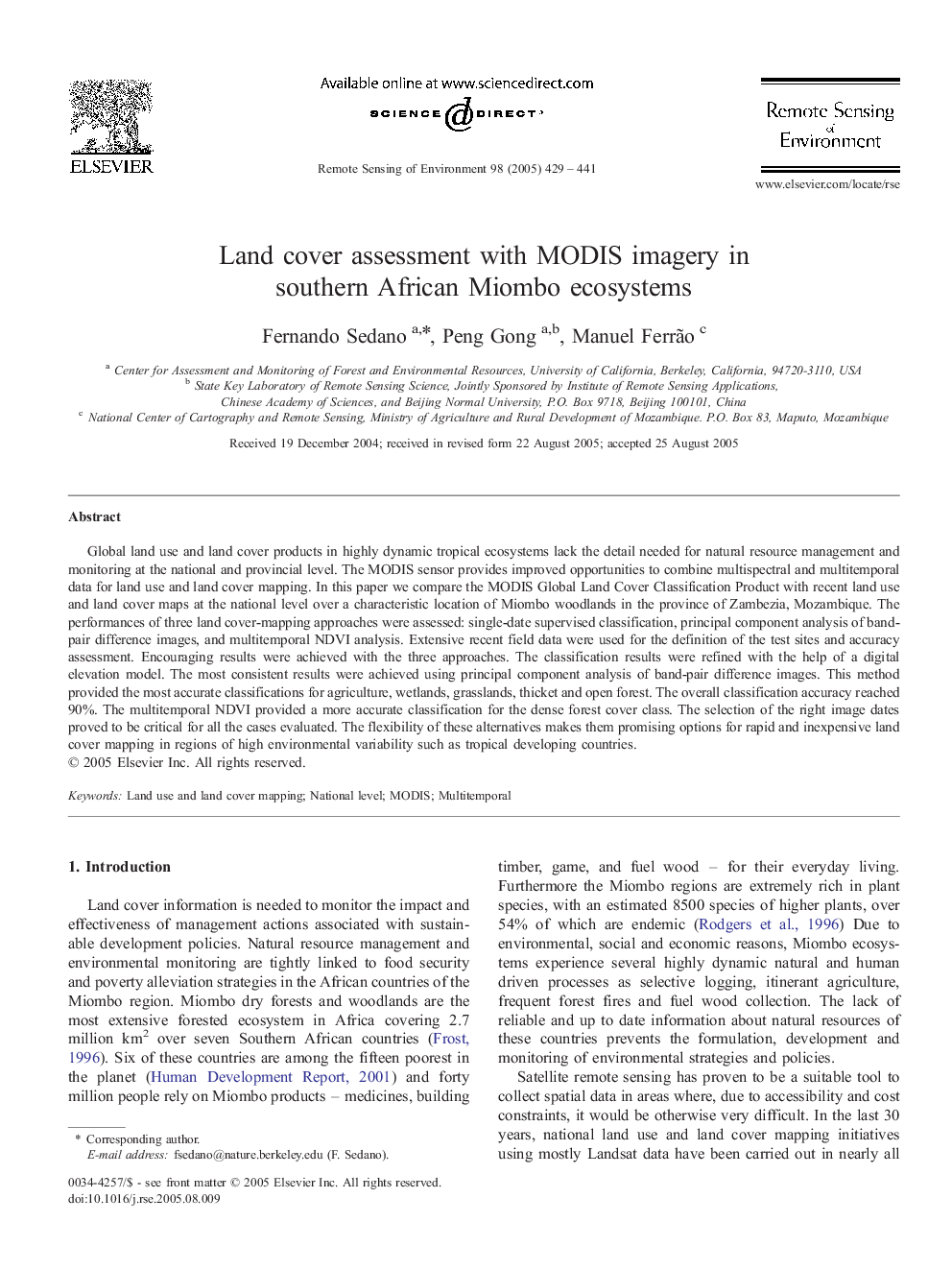| Article ID | Journal | Published Year | Pages | File Type |
|---|---|---|---|---|
| 10114065 | Remote Sensing of Environment | 2005 | 13 Pages |
Abstract
Global land use and land cover products in highly dynamic tropical ecosystems lack the detail needed for natural resource management and monitoring at the national and provincial level. The MODIS sensor provides improved opportunities to combine multispectral and multitemporal data for land use and land cover mapping. In this paper we compare the MODIS Global Land Cover Classification Product with recent land use and land cover maps at the national level over a characteristic location of Miombo woodlands in the province of Zambezia, Mozambique. The performances of three land cover-mapping approaches were assessed: single-date supervised classification, principal component analysis of band-pair difference images, and multitemporal NDVI analysis. Extensive recent field data were used for the definition of the test sites and accuracy assessment. Encouraging results were achieved with the three approaches. The classification results were refined with the help of a digital elevation model. The most consistent results were achieved using principal component analysis of band-pair difference images. This method provided the most accurate classifications for agriculture, wetlands, grasslands, thicket and open forest. The overall classification accuracy reached 90%. The multitemporal NDVI provided a more accurate classification for the dense forest cover class. The selection of the right image dates proved to be critical for all the cases evaluated. The flexibility of these alternatives makes them promising options for rapid and inexpensive land cover mapping in regions of high environmental variability such as tropical developing countries.
Keywords
Related Topics
Physical Sciences and Engineering
Earth and Planetary Sciences
Computers in Earth Sciences
Authors
Fernando Sedano, Peng Gong, Manuel Ferrão,
